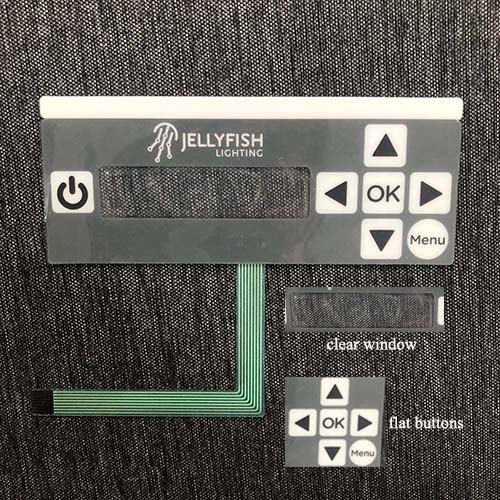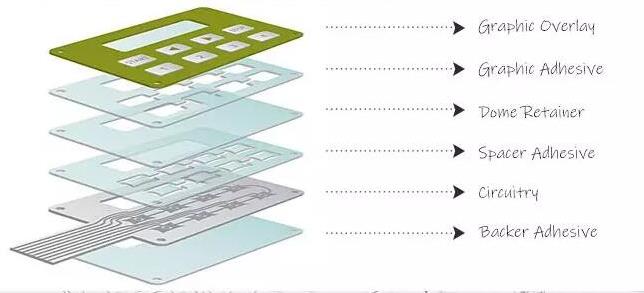When it comes to the surface material of a mouse, it can roughly be categorized into three types: matte, glossy, and skin-like textures. The matte finish offers a stable and non-slip grip, which is great for maintaining control during extended gaming sessions. However, over time, areas that are frequently touched can become polished and oily, diminishing the tactile feedback and comfort.
On the other hand, the glossy surface has a sleek, high-end look, but it can feel uncomfortable when your hands sweat. It’s less forgiving when it comes to moisture, which might make gamers reconsider their choice.
The skin-like texture mimics human skin, offering a soft and comfortable feel. However, due to its porous nature, it's prone to damage, staining, and corrosion. This aspect significantly impacts the longevity of the skin-like coatings, leading many manufacturers to invest in more durable surface treatments.
In my experience, many mice suffer from the degradation of their skin-like coatings, which often leads to issues beyond just aesthetics. For instance, my mouse recently developed this exact problem. The once smooth surface had become sticky and unappealing, with visible wear and tear. To breathe new life into it, I decided to take matters into my own hands. Scraping off the outer layer proved to be surprisingly effective, transforming the surface into a matte finish. While it wasn’t as pristine as new, it was far better than the sticky original state.
QPAD, known among peripherals enthusiasts as a creative brand, has been somewhat slow in launching new products. Their recent releases, like the DX-20 mouse and MK-10 keyboard, caught my attention, but I remain curious about their future innovations. As for now, I’m transitioning into retirement mode, eager to see what surprises they have in store.
The QPAD 8K mouse has been released in two versions, each equipped with a different sensor. One features the original PMW3310 optical sensor, while the other uses the A9800 laser sensor. These sensors differ not only in terms of performance but also in price. After a long gaming session, I noticed discomfort in my wrist, reminding me of the big QPAD 8K mouse sitting in my drawer. Alas, neglect had taken its toll; the protective cover was missing, exposing the mouse to dust and grime.
Despite its sticky surface and accumulated dirt, the mouse still managed to retain some charm. However, frequent use had caused noticeable scratches, making the previously comfortable skin-like texture feel unpleasant. Scratching away at the coating with my nails revealed a rougher matte finish underneath, which was less sticky but far from perfect.
The QPAD 8K mouse is larger than most, offering ample palm support. Its elongated shape provides wrist support, setting it apart from competitors like the Sairui Rival 300. The Rival 300’s ergonomic design fits snugly into the palm, while the 8K’s broader base ensures stability. However, the 8K’s larger size can feel cumbersome for smaller hands.
After years of heavy use, the skin-like coating on the 8K had worn off under my thumb. Initially, I considered using alcohol-soaked foam to dissolve the coating, but lack of patience led me to adopt a simpler approach—direct nail scraping. Fortunately, the damage wasn’t severe enough to warrant such drastic measures.
With some persistence, I managed to remove the damaged coating, revealing a matte finish beneath. This transformation wasn't flawless, but it improved the overall feel significantly. Residual bits were later cleaned using a screen-cleaning spray and wipes. Overall, the process was straightforward, requiring no specialized tools.
Disassembling the mouse was relatively simple, thanks to its modular design. Removing the screws and peeling off the stickers exposed the internal components, including the A9800 laser chip and Omron white point micro-switches. The A9800 sensor is a top-tier component, ensuring compatibility with various surfaces, including glass. The Omron switches provide a satisfying click, though some users might prefer a crisper response.
Reassembling the mouse was equally straightforward, with the skin-like coating now replaced by a matte finish. The transformation was striking, eliminating the previous sticky sensation entirely. While the matte finish lacks the original moist feel, the overall usability improved dramatically.
For those considering a skin-like mouse, I’d recommend careful consideration. My experience shows that a little effort can rejuvenate an aging mouse, turning it into a reliable companion once again. Ultimately, the decision boils down to personal preference and usage habits.
Membrane Switch
What is a membrane switch?
A membrane switch is an operating system integrating key function, indicating element and instrument panel. The membrane switch, also called a membrane keyboard or membrane keypad, is a custom switch assembly that uses pressure to open or close the conducting path in an electrical circuit. The ultimate purpose of a membrane switch is to serve as the interface between man and machine, enabling an operator to communicate with a piece of equipment, instrument, or machinery. Membrane switches are still consistently utilized as user interfaces for a wide range of products from industrial machinery to medical devices to agricultural equipment. Even the most rigorous of industries can count on proven membrane switch technology to provide a reliable, long-lasting human-machine interface.

How about the construction of a membrane switch?
A membrane switch assembly differs from traditional mechanical switches. Membrane switches are essentially a sandwich of thin layers that are bonded together using pressure sensitive adhesives. The layers of a basic membrane switch construction include: a membrane overlay, spacer, printer circuit, rear adhesive, and tail filler. Other electronic components can be implemented, as well, such as discrete LEDs, backlighting sources, and connectors that make membrane switches easy to integrate into other systems or devices. Each layer in a membrane switch assembly serves a different purpose, and custom features require the addition of specialty layers. Depending on the environment and requirements of the application into which the membrane switch plugs into, the construction can vary.

Membrane Switch,Membrane Keypad Switch,Customized Membrane Switch,Custom Membrane Switch
CIXI MEMBRANE SWITCH FACTORY , https://www.cnjunma.com

